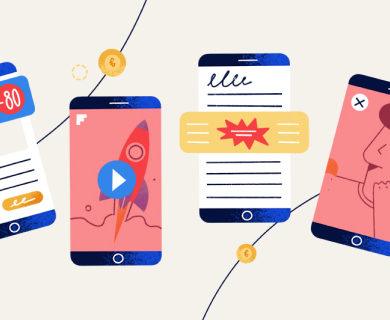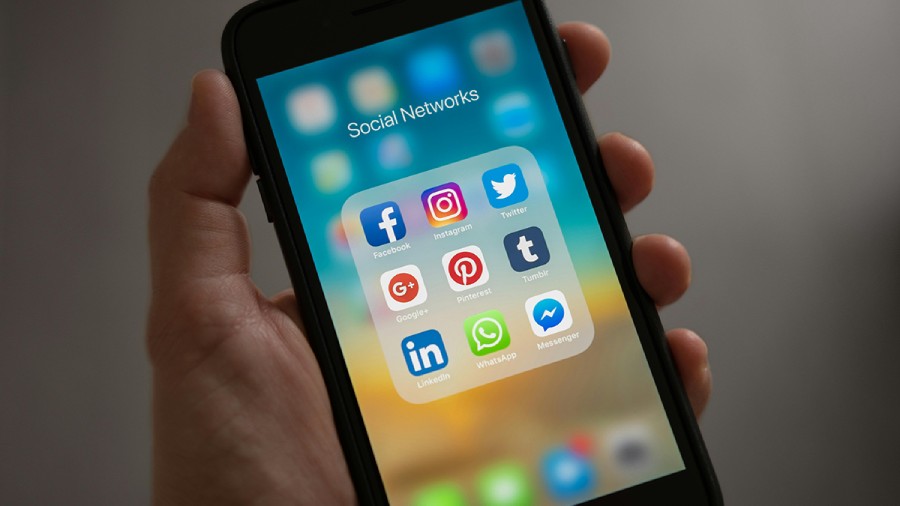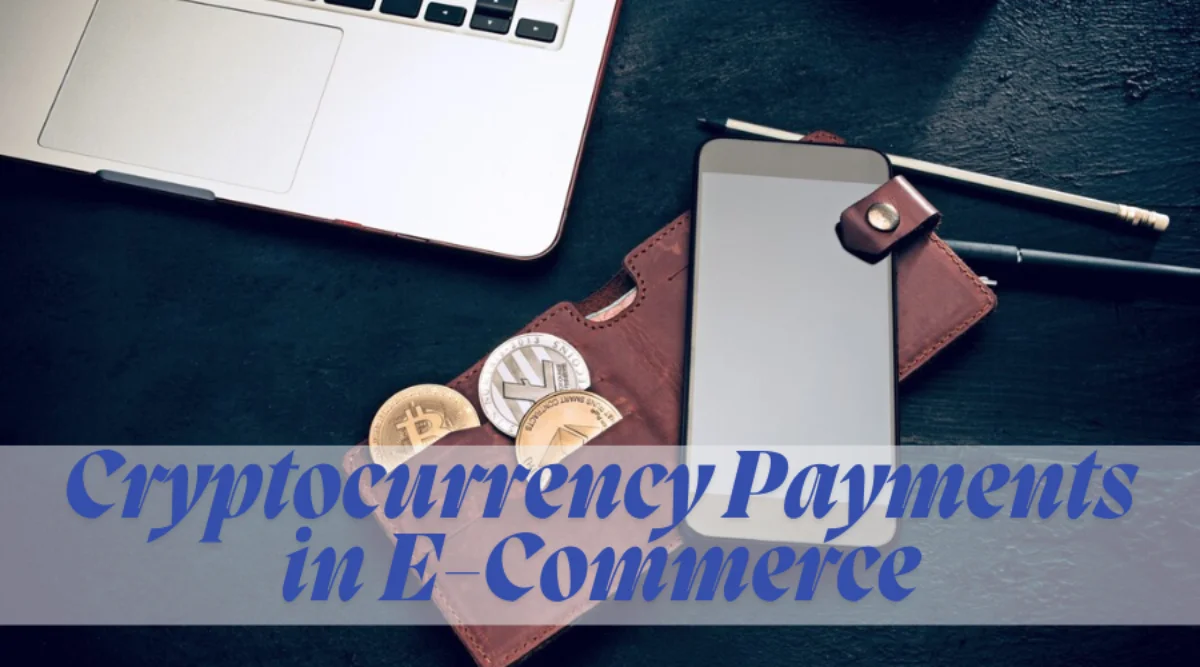
5 Most Popular Monetization Models For Mobile Apps
Mobile apps can be prosperous businesses and generate revenue. It doesn’t mean that only paid apps can be profitable. There are different ways to earn money on mobile apps and in this article you’ll find the most popular app monetization models that enable app owners to generate revenue.
You’ll also get to know the less popular models, some facts about the mobile app market and you’ll be provided with hints on which mobile app monetization strategy to choose for your business!
Mobile App Market
Looking at the app revenue, you can draw some conclusions about the profitability of creating mobile apps:
In the first quarter of 2022, gross app revenue in the Google Play store amounted to almost 11 billion U.S. dollars worldwide. On the iOS side, the Apple App Store generated 21.8 billion U.S. dollars in consumer spending on in-app purchases, subscriptions, and premium apps.
As you can see, a mobile app can bring you revenue to develop your business.
This can give you a hint on how important it might be to choose the right app revenue model and take care of your app monetization from the first moments of your product’s existence.
Most Popular App Monetization Strategies
According to mobile app publishers, most used monetization methods in non-gaming apps in 2021 were: video ads, display ads, native ads, in-app purchases and subscriptions.
This basically means that even if there are other methods, in-app advertising remains the most common way to make money on apps.
Below you can find a chart showing the revenue from mobile apps in billions of dollars in 2021. In-app purchases reached the second highest revenue and paid apps are in third place, although there’s a big difference in results between them.
But let’s not forget that this research also includes mobile games. Most of the revenue from in-app purchases come from games. Apart from this type of apps, this monetization method is not very popular.
Let’s have a look at what it looks like with non-gaming apps:
In-App Advertising
There are different types of in-app advertising. Three of them are among the most popular mobile app monetization methods. In this model, the app is generally available for free and offers full access to functionalities, but in return, it displays ads in various places so that the app generates revenue.
Display Ads – 77%
Implementing display ads was the most popular app monetization strategy in 2021 among all apps in mobile app stores. Display ads are simply banner ads displayed on the screen while users browse the app.
Video Ads – 76%
Video ads are short video clips that appear on the screen while people use the app. They most often last from 5 seconds to 2 minutes. They have probably gained such popularity due to the fact that they bring in quite large earnings. Overall, video ads provide the best RPC (revenue per click).
Native Ads – 35%
Native ads are ads appearing in the app in different places, not on the whole screen. In this app monetization strategy, the purpose is to make the ad look like a native element of the app. User is not supposed to recognise the ad but click it as if it’s a part of the app.
In-App Purchases – 6%
In-app purchases are among less popular app monetization models with the result of 6% share in 2021. This is probably because app creators still prefer to create free apps with in-app ads to encourage users to download the app. This, as mentioned above, is not applicable in case of mobile games, where in-app purchases bring much more revenue.
However, it’s worth mentioning that users are more and more willing to make in-app purchases to take advantage of additional features etc.
In-app purchase (IAP) revenue in the App market is projected to reach $200.60bn in 2022.
Subscriptions – 4%
Subscriptions in 2021 also haven’t reached a very high percentage of share in the mobile apps market. In-app advertising is still much more popular. But let’s not forget that there are some very well-known platforms based on subscriptions, like Netflix and Prime Video, so it’s highly likely that there will be more.
Other Monetization Models
Apart from the above, there are also other app monetization models, such as freemium, partnership and affiliation, methods that bring commissions. They may not be so popular, maybe because they’re used in specific apps categories or they’re mixed with above strategies.
Freemium
Freemium is quite similar to subscriptions and is even often merged with the subscription model in statistics. It actually assumes that a greater range of functionalities is offered. A subscription can cover all features of the application, whereas in the freemium model, a subscription can be purchased for only some features or part of the application’s content.
Partnership
Some businesses opt for partnership to find mutual benefits for each other, especially working in the same niche. This approach opens many different monetization possibilities including buying advertising space, connecting retail business with creative studios and more.
Affiliation
This method is based on referral (affiliation) links and retail purchases of products offered by your partner through your app. It’s often shown as recommended products or sets of products in your app with links leading to the partnered store.
Commissions
As a result of the above methods, your application, and therefore your business, can generate revenue through commissions. These mobile app monetization strategies are based on partnerships, sustaining shared benefits and building the brand through collaboration with other brands. If you want to follow this approach, be sure not to accept proposals from all possible sources – choose those that will actually allow you to build a solid network of customers and are directly related to your business. Otherwise, the result may be poor, e.g. it is not a good idea to propose household products to users of a fitness app.
How To Choose The Monetization Strategy For Your App?
Let’s dig into some hints on how to choose the right app monetization model for your business. Actually, there are a few simple steps to find out which path you should follow.
Define Your Target Market
The choice of the app monetization strategy in every app depends on lots of factors, mostly related to the target market. That’s why it’s so important to get to know your app’s target audience before deciding which method you should use in your app.
Doing some speculations about the users of your app won’t be enough. You should do a deep market research and find out everything you can about the (potential) app users.
You can also prepare a user persona, describing your ideal type of user – perfect, the ones you’d like to have, for whom specifically you created this solution.
User Persona
In the user persona, very helpful tool to organise information about your target group, the following things should be described:
- Basic information (users’ name, occupation, age, location etc.)
- A short bio (users’ back stories describing their daily life, their preferences and problems)
- Users’ goals, motivations, needs, pain points and frustrations.
Once you get to know your ideal users so well, you’ll be able to determine if they’re mostly Android or iOS users, or maybe you’ll need to create an app for both platforms, you’ll find out where they are located and how likely they are to be willing to pay for the app.
Paid Apps And In-App Purchases
To give you an example, iOS users are more willing to pay for apps as well as to make in-app purchases than Android users. If your app is focused on iOS users, for example for Americans, this might be the right way.
Free Apps With In-App Ads
If most of your target users are Android users, a free app will probably be better. Free apps users are mostly used to ads, so they probably won’t be surprised or disappointed. However, let’s not forget that there are various types of ads and if you put too many annoying in-app ads, users will be more likely to delete your mobile app from their devices.
Free + Paid Apps
On the other hand, it might be a good idea to give the users of your app the chance to resign from ads which should be an additional paid option. It’s another app monetization strategy where the app is available for free but users have the possibility to pay additionally to remove ads. There are also other possibilities, such as additional paid features.
Research And Analyse The Competition
One important thing to consider is what your competitors do regarding their app monetization. Look for similar apps in app stores and try to define what app revenue model each of them have acquired. This is particularly important because users reviewing similar applications, or even testing different solutions, will take into account how much they have to pay and for what features.
In order to decide to buy additional features or subscriptions, users need to feel that they actually need it. It is therefore worth offering free trial periods. Pay attention to whether your competitors are doing this too. Maybe this will be one of your competitive advantages?
Competitive Analysis
Competitive analysis is one way to do this, a tool that will help you compare competing apps and notice what solutions might be ideal within the same target group. The exercise is to list a few competing products and their core features and then think about what they lack.
Conclusion
There’s rather a big difference between the popularity of free apps with in-app ads and other options including paid apps, subscriptions and implementing in-app purchases. Remember though that it doesn’t really mean that the most popular strategies are the safest ones and will always bring you the best results when it comes to the app revenue. The mobile app monetization strategy should always be tailored to your target audience and your users’ needs.
Author Bio
Agata Frontczak is a marketing specialist at FiveDotTwelve, an app development agency that works with startups and turns business ideas into great digital products.

Law Firm Management: How Technology is Driving Efficiency

Most Popular Social Networks: Dominating Online Platform







